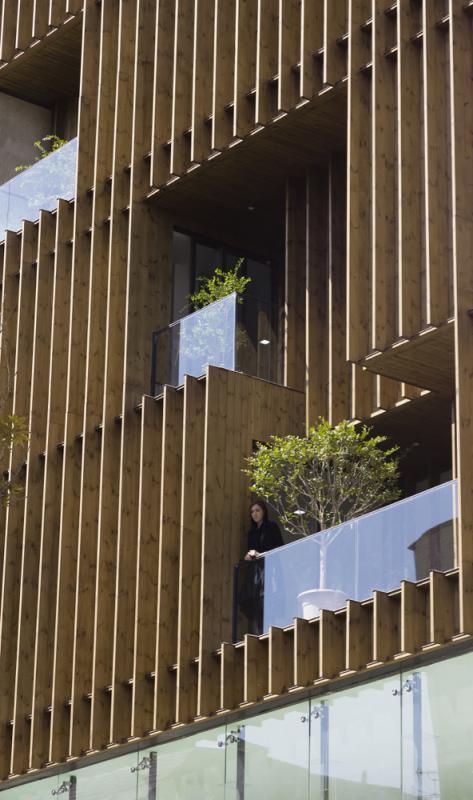Saadat Abad Commercial Office Building
Saadat Abad building is exposed on both north and south parts with 1400 square meters substructure. It includes one commercial unit, five offices in five floors, one Floor for parking space and a floor for stores. Interior and Exterior Dialectics: This project shifts from a basic relationship between the building and the city to an interaction between the inside and outside. Not only provides an answer for the needs of the users, but also this building intended to create a connection with the exterior observers. Creating a calm and varying urban facade and enhancing the quality of the interior spaces are the main concepts of designing the two facades of the project. To prevent sharp southern sun light during the working hours the vertical louvers are used in the southern façade. Not only make the interior spaces more comfortable but also these louvers create an incorporated facade. Furthermore it conceals the unnecessary details of the building from the people who visit it from its main view, in the park that is in front of the project in Saadat Abad Boulevard. This park has a great role in forming the concept of southern facade. Some parts of the facade have been pushed inside to open a perfect view of the park for the users. The northern facade is designed by the similar modules of the southern facade and it will conceal the unnecessary details of the building from the city. In front of the openings the wooden surfaces could be rotated in three angles of 0, 45 and 90 degrees. Rotational louvers could help to provide relief from the harsh midday sun and create private interior space when needed. The wooden surfaces of the northern facade could be described as the dialogue between the users and the city. These surfaces could change into thousands of forms.
![[Lp2 Architecture Studio - Saadat Abad Commercial Office Building - COVER IMG]](https://architectureprizecom.s3-us-west-2.amazonaws.com/uploads/large/large_1467450772.jpg)



